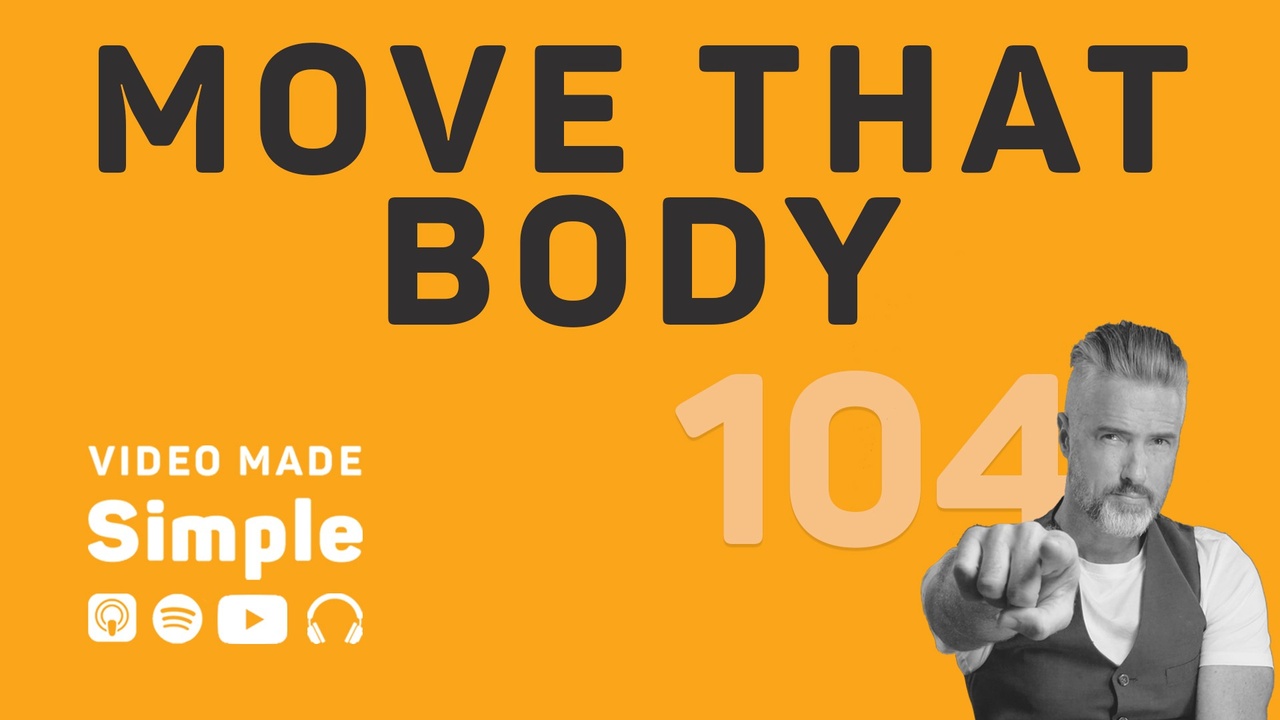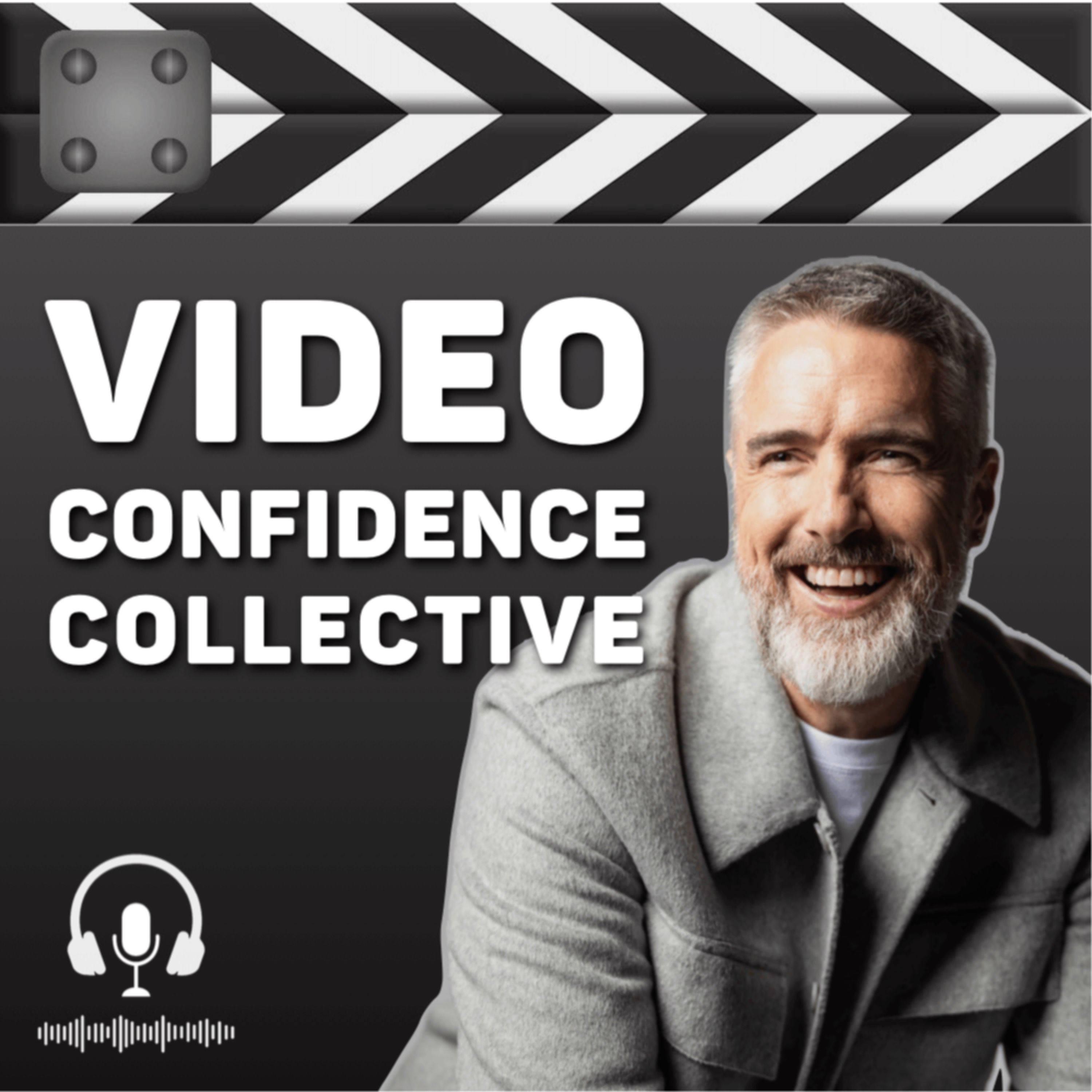Video Presentation Tips: Body Language (Episode 104)
Apr 27, 2022
Why do presenters smile on camera? Why is it important for them to use hand gestures or move around the screen? Does it convey the message more effectively than just standing still and reading the words off the teleprompter?
Welcome to 'Video Tips,' the Video Made Simple podcast segment where we offer strategies for on-camera presentation, scripting, and video marketing: all the tools you need to get started on videos.
In this episode, Chris Schwager, Video Marketer from Ridge Films, talks about why body language matters in communicating your message, and how it impacts your on-screen presentation. Learn how one client made his presentation much more interesting by adding movement in his delivery.
DIY VIDEO PROGRAM Create your own videos with a push of a button
ON-CAMERA TRAINING Create outstanding videos with natural skills of a professional presenter
ASK YOUR QUESTION What has you feeling overwhelmed? Let us help you solve the mystery of video marketing
CONVINCE YOUR BOSS Download our guide to help decision makers understand the importance of video marketing their business.
THE POWER OF VIDEO MARKETING View on demand in 60-minutes. 7 lessons to kickstart your video marketing journey.
RIDGE FILMS YOUTUBE Catch new episodes of the Video Made Simple podcast on our Youtube channel. Let us know what you think and feel free to like, comment, and subscribe.
Video Transcription:
Chris Schwager 0:03
Welcome to the Video Made Simple podcast where we help take the mystery out of video and break through the monotony of day to day communication. I'm your host, Chris Schwager. And if you're wondering how to connect better with your buyers, your staff or your audience, then here is a Video Presenting Idea, you may want to consider the use of body language.
Chris Schwager 0:22
What am I talking about, it's the way we communicate, it's 90% of the way we communicate, yes, the way that you present yourself to your audience is served 90% of the time through the way that you use your body and move your body and smile and move your head. These are all elements that make up a really great performance. It's something that we do unconsciously in our day to day lives. But in the world of video, sometimes you've got to add a bit of consciousness there to make sure that it's appealing and exciting for you to watch.
Chris Schwager 0:56
Body language is a big part of video, plays a huge part in building a great strong first impression. And I find now that if I'm having phone calls with prospective buyers, I would much rather now have a zoom call rather than the phone call because I can't see him, and I can't work with them, and have my body language convey what I'm trying to get across when I'm on a phone call. So I really try and drive people into that Zoom space, where we get under the DIY studio, lighting, sound and video, and really be able to use our body language to convey the message that we're trying to get across.
Chris Schwager 1:33
And it's also really great at reading the nuances of the recipient, the person on the other end as well. So it's my preference, I totally go for zoom every single time over a phone call. But first I just want to quickly talk to you about one of our clients Sound Financial, who had done a company profile video with us they were in the studio one day I was doing the filming that had all their training and all their scripting had been completed. And we're on the last take of his to camera piece. And we reviewed it back. And I was satisfied. I thought it was good. I was ready to sign off on it and show the client and he said it's about 80 or 90% of the way there and I was like what?
Chris Schwager 2:08
80 or 90% of the way there, that's not 100%. Right. So what, out of this performance, and I was trying to figure it out. It's actually kind of embarrassing as a director to say that, but I was stumped a little bit just for a moment. And then I realized he was rigid, he didn't move. He was really like glued. And that's all I did. I didn't give him any other direction. Other than Okay, on these moments throughout the script where you're appearing on camera, we know where you're appearing on camera, just had a little bit of sway a little bit of movement, a little bit of head wobble, get show the audience that you are relaxed and you're comfortable in your skin. And because everything sounded great, it was just this body language that wasn't being conveyed correctly. The way he sounded sounded natural and real and authentic like you've done a million times. But the way that he was showing looked like he was a nervous scared little pussycat. So we just added those couple of elements, recorded, watched it back, and is like, great, done. Thank you. Let's move on. I was like, Wow, what a difference but some body language in there makes to the overall performance.
Chris Schwager 3:14
So you got to be loose as a goose when you're loose as a goose and your bodies moving, you know, not taking I'm not saying go crazy, because you don't want to be distracting, but just some movement in your performance is definitely encouraged.
Chris Schwager 3:27
Now, sitting or standing? That's a common question that I get when people were being filmed. I do both. Standing obviously gets people a bit more ready to go. Sitting can be a little bit more relaxed and people can be more slouchy in their seats. I'll probably go with standing over sitting but you know, if you're in a modern office workspace at the moment, you probably have options for both anyway. And I certainly do the both as well often train when I'm standing and I present when I'm sitting I kind of do a bit of everything.
Chris Schwager 3:59
One of the biggest tips that you can do that will sell your body language on camera is to force smile. To get those muscles working, start running lines rehearsing and speaking with an induced smile. You can almost hear a how an induced smile changes the way and that's what I'm doing now how it changes the way that I sound. People want to know what to do with their hands. It's not as important as the smile. Right? The smile is everything. Why? Because we're predominantly film from the chest up when we're on camera. That's pretty much the average, bloody Tiktok video, LinkedIn video, whatever it is, it's pretty much at least a half body up and the focus is on eyes, mouth and face. Not on what your hands are doing. So people probably overemphasize what their hands need to be doing. Their hands can be a distraction if they're overused. And for people that need guidance around the hands, it's really comes at at the end of our training with them, but it's can be actually used strategically and guided by the script. So we can actually use guides in the script and put them in a teleprompter and they know to, hey, just do a little simple hand gesture at that moment in the script. And that can go a long way. And we do it very sparingly, because we don't want to complicate it.
Chris Schwager 5:19
Now, for those that are a bit more experienced, you probably notice me using my hands right now if you're on YouTube, you would notice that I'm doing far more unconsciously. But anytime people are rigid and reactive about their hands, that's when it's a real problem. And we definitely don't want to confuse people and distract them when their focus really should be on eyes, face and mouth.
Chris Schwager 5:41
Getting your body language right really helps convey that you're comfortable. You're a pro, you look like you've done this a million times before. And if you're relaxed, then your audience can relax as well. If you want more personalized coaching around this, then be sure to leave a comment and let us know how we can help you present like a pro.
Chris Schwager 6:01
The beauty of having your own presenter coach is that they'll give you constant feedback. And that's something you don't get very often, I will admit and your wife is not the best judge of your performance. Your audiences are a coach. They are the clearest ones to tell you what you are and are not doing properly. You'll pick it up quickly with a persona coach. You'll get a performance that's consistent, you'll deliver a message that people want to watch and we all know how important that is in today's world.
Chris Schwager 6:25
And don't forget to subscribe to this channel where you'll get weekly Video Made Simple ideas to present your videos like a pro. That's all for this episode. Thank you so much for listening and see you next week.

